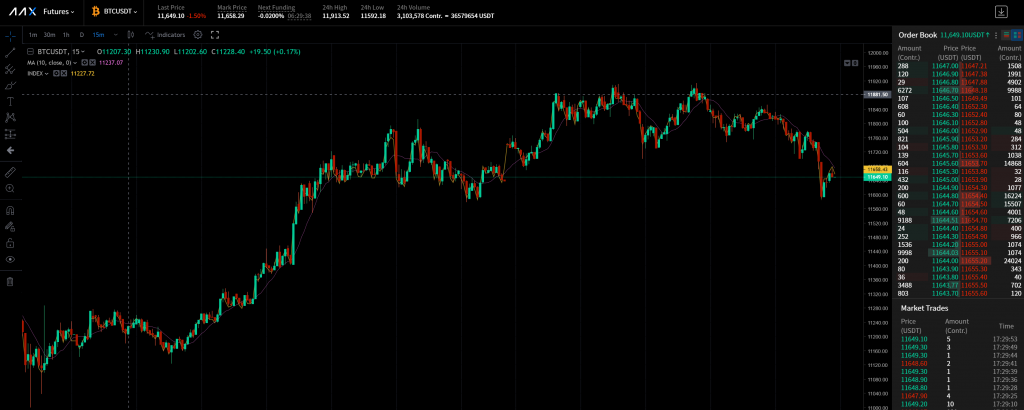Deflationary tokens are a bit of an odd breed in the broader cryptocurrency industry. They are designed to not only reduce the amount of tokens in circulation, but also bring more value to the asset. When deflationary tokens are coupled with a viable trading platform, interesting things are bound to happen.
Contents
The Concept of Burning Tokens
Until recently, there was no effective way to reduce the supply of a crypto asset. Although it can be done by sending excess coins to a “burner” address, the entire process remains relatively centralized. A key example is Binance Coin. The Binance exchange will burn 20% of the platform’s net revenue in BNB every quarter.
While this approach does work, nothing prevents the company from not fulfilling this obligation in the future. It is this particular aspect that may cause some friction along the way. Thankfully, there are ways to bypass these aspects by introducing deflationary tokens.
What is a Deflationary Token?
As the name suggests, a deflationary will see its available supply reduce automatically. There is no external intervention required, although this approach may seem somewhat extreme. It all depends on how the token is coded and what its developers are trying to achieve.
The introduction of BOMB ensured that 1% of the tokens used in every transaction would be burned in the process. This ensures that no tokens will exist in less than 15 years from now. Does that make the token valuable? Sadly, no, as many people don’t want to invest in something that may not be around for much longer.
Void, another deflationary token, took this concept one step further. Rather than burning 1% of the transaction amount, it destroys 3% of every transfer. It has a higher supply than BOMB, ensuring the reduction rate is warranted. Additionally, the token provides staking support to offset the burning aspect a bit. What makes this deflationary token stand out is how it has a native application focused on gaming.
The approach by NUKE is a bit different from both of the projects mentioned earlier. NUKE Will stop burning coins after a while to ensure some supply remains. Its developers also want to introduce a DEX and dApps to bring move value to the deflationary token. It is evident that any project exploring this approach will need real world cases to be of interest to potential investors.
An Overview of the AAX Ecosystem
Building a new deflationary token without having a use for it won’t serve any purpose. In the case of AAX, its native AAB token is linked closely to the platform’s trading ecosystem and features.
On the AAX platform, it is possible to explore many different trading vehicles. Whether one wants to explore spot pairs or crypto derivatives, both options are available. More importantly, these trades can be executed with high leverage, which increases the potential for future profits. The AAX platform also lets users buy Bitcoin through fiat currencies, including CNY, USD, and HKD.
Every month, the trading listings will be optimised. This adds a unique angle to AAX, and ensures users will keep coming back to explore all of the different options. The cryptocurrency market provides exposure to many types of assets and tokens. Rotating the available offerings makes a lot of sense from this point of view.
Ongoing Platform Growth
Global interest in cryptocurrency derivatives has picked up significantly in 2020. AAX is one of the players to keep an eye on in this particular department. Its BTC/USDT futures trading volume has risen above $38 million worth of USDT on a daily basis. This further confirms that traders are more than willing to be exposed to Bitcoin. The team has confirmed that more contracts will be added in the near future.

As far as the futures trading goes, AAX provides the lowest fees in the industry today. Current fees are 0.02% for both maker and taker across all of the different contracts for users to explore. Spot trading fees are also very competitive, as they start out at 0.06% for makers and 0.1% for takers, Depending on the overall trading volume generated by a user, the fees will decline accordingly.
Can AAB Outshine the Competition?
On the surface, AAB is very different from other deflationary tokens. Its supply is shrinking, as there is a daily token burn. This burn is funded by using 100% of the AAX’s futures revenue. Similar to NUKE, the developers are intent on only reducing part of the supply. Once 50% of the tokens are gone, the daily burns will cease completely.
What’s important here is that AAX is growing rapidly, with higher trading volumes recorded every week, meaning coin burns are also increasing. AAB provides a way for early supporters of the exchange to participate in, drive and benefit from growing the platform.
But other than reducing the supply, there are actual benefits to using AAB. The token provides a trading discount of up to 50% on the native AAX platform. Users can also opt to use AAB for settling all of the trading fees, if they prefer that option. Other benefits include unlocking trading bots and trading signals, as well as increased API access rates, among other things.
There is an extra use case to this token, called AAB Plus. It is a savings service for users to earn returns on their allocated tokens. By depositing tokens, users will accumulate daily rewards,
More specifically, there are three different types of rates to explore. The fixed rate guarantees a 4.5% annual payout. Flexible rate will issue higher rewards to users if the AAB/USDT value on AAX decreases. Last but not least, the hybrid rate is designed to withstand market conditions and yield more AAB rewards.
Conclusion
Deflationary tokens will always have a place in the cryptocurrency space. Those tokens capable of not just reducing their supply, but also provide value as part of a broader ecosystem, may have a better chance at survival. Compared to the likes of BOMB and Void, AAB is approaching the deflationary concept from a different angle.
Being part of the AAX ecosystem has the potential to bring more value to the token. With future improvements to come, there are a few things to look forward to. The roadmap makes mention of adding more indices, quarterly futures, and supporting other assets for collateral for trading. Later on, the AAB token will receive its own futures contracts.
Image(s): Shutterstock.com

